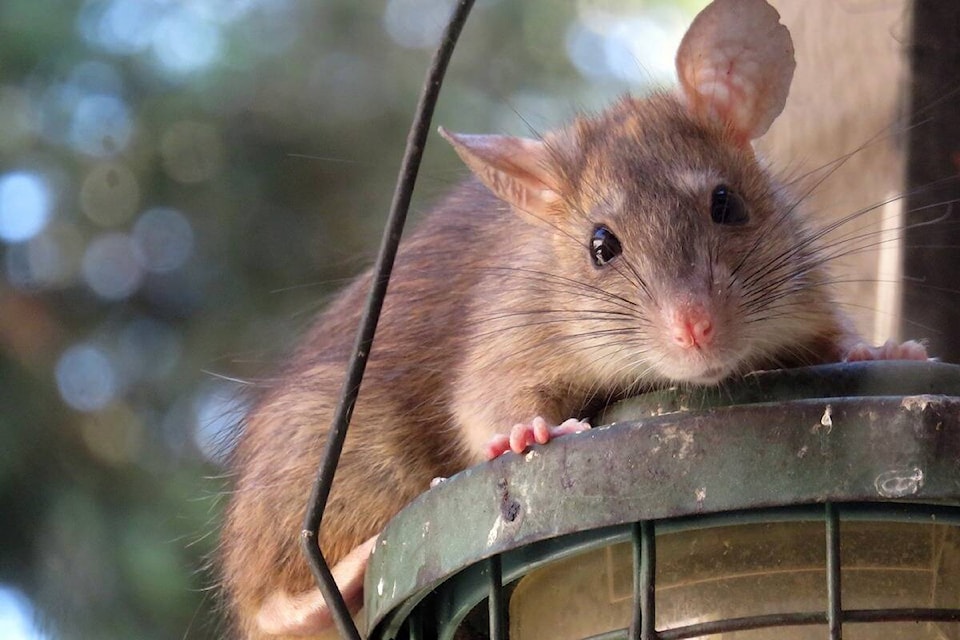From restaurants and alleyways to fruit trees and sewage lines, day and night, a large population of rats and mice scurry around Victoria, which pest-control company Orkin Canada just ranked as the fifth “rattiest” city in the country.
Rankings are based on the number of commercial and residential rat and mouse treatments the company performed between Aug. 1, 2023, and Jul. 31, 2024. Toronto, Vancouver, Kelowna and Burnaby were the top finishers in Canada's rat race, respectively.
What makes Victoria so appealing to rodents?
Kurtis Brown, who manages Orkin Canada's field technician training programs, is best qualified to speak to the city’s ratty reputation.
"I've worked very, very intimately with the rodent challenges of Victoria for the last 15 years," said the expert, adding that three factors contribute to the brawny rat and mouse population here, the most significant of which is Victoria’s weather.
“Our weather helps rodents because they have a longer breeding season,” said Brown. “That window where we can have seasonal breeding outdoors is much larger in our region. And so, that leads to an increased population, especially outdoors.”
Density is an important ingredient, too.
“When we start to create density, of course, we have humans and we have food. And then we have garbage," said Brown. "Our lack of management of our own resources ... becomes a resource for these animals."
In human-built environments, rats and mice survive primarily on food scraps, like restaurant waste and litter. These rodents have even been known to feast on dog feces, which Brown called a "cheap, easy protein source.”
Density also means these critters have access to prime real estate. The more sewers, houses, apartments and office buildings a city provides, the more places rats and mice can eat and breed in peace.
Older buildings, of which Victoria boasts many, are even more welcoming to rats and mice.
“With older structures, as things shift and move and change, it provides opportunity for rodents to get into those buildings or into that infrastructure, like sewer systems or under sidewalks,” said Brown.
What might look like an insignificant crack in a building's foundation may prove to be ample space for rats and mice to enter.
These rodents’ small, cylindrical bodies allow them to cram into tight spaces. Rats can squeeze into a 13-millimetre crack, according to Brown, while mice can work their way into minute six-millimetre spaces.
According to Brown, Victoria's rodent population has only grown in recent years.
"There are more apartment buildings, there are more people, there are more resources for rodents," said Brown, adding that the long, hot summers over the past few years have provided rats and mice with ideal breeding conditions, which have likely had a positive impact on populations.
The sheer number of rodents here means Brown has been kept busy. Dealing with thousands of mice and rats over his career has provided many interesting, albeit gross, examples of how nimble, creative and tricky creatures can be.
"I've had homes flooded from rats chewing out of sewer pipes, mass flooding underneath buildings. Of course, this is grey water, this is sewage coming out of pipes," said Brown. "The potential pathogen load that those animals are carrying is pretty darn high, especially when you have them literally crawling through sewage and entering in people's crawl spaces or walls or ceilings."
Brown has entered homes, only to find attics contaminated with tens of thousands of droppings. Other times, he has helped remove 300 rats living in one place.
The expert has observed plenty of odd rodent behaviour over the years, too.
"We had a rat in someone's house ... our technician could not catch," said Brown. "They set a camera up to figure out what the rat was eating.”
The footage revealed the rat was chowing on feces left in the home’s cat litter box.
"In order to catch the rat, guess what – we had to bait our traps with cat feces," added Brown. "Caught the rat right away."
Scaling buildings, digging under foundation walls, chewing through soft metals and asphalt – Brown acknowledged how interesting rat behaviour can be, especially to those who aren't familiar with the rodents
"Everybody's got a good rat story," said the expert.
Orkin Canada has provided some valuable advice about keeping rats and mice out of homes, including keeping grass short, trimming overgrown vegetation, storing garbage in rodent-proof containers and sealing entry points in houses and apartments with rodent-proof materials.

